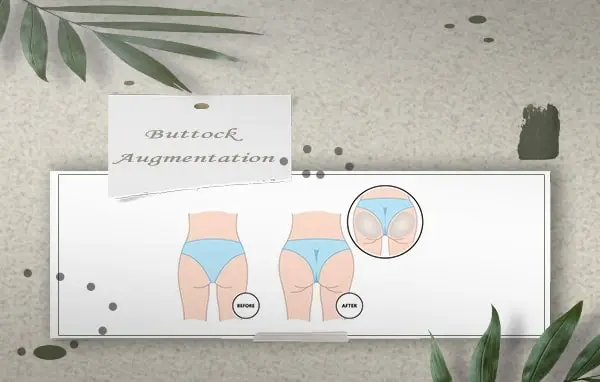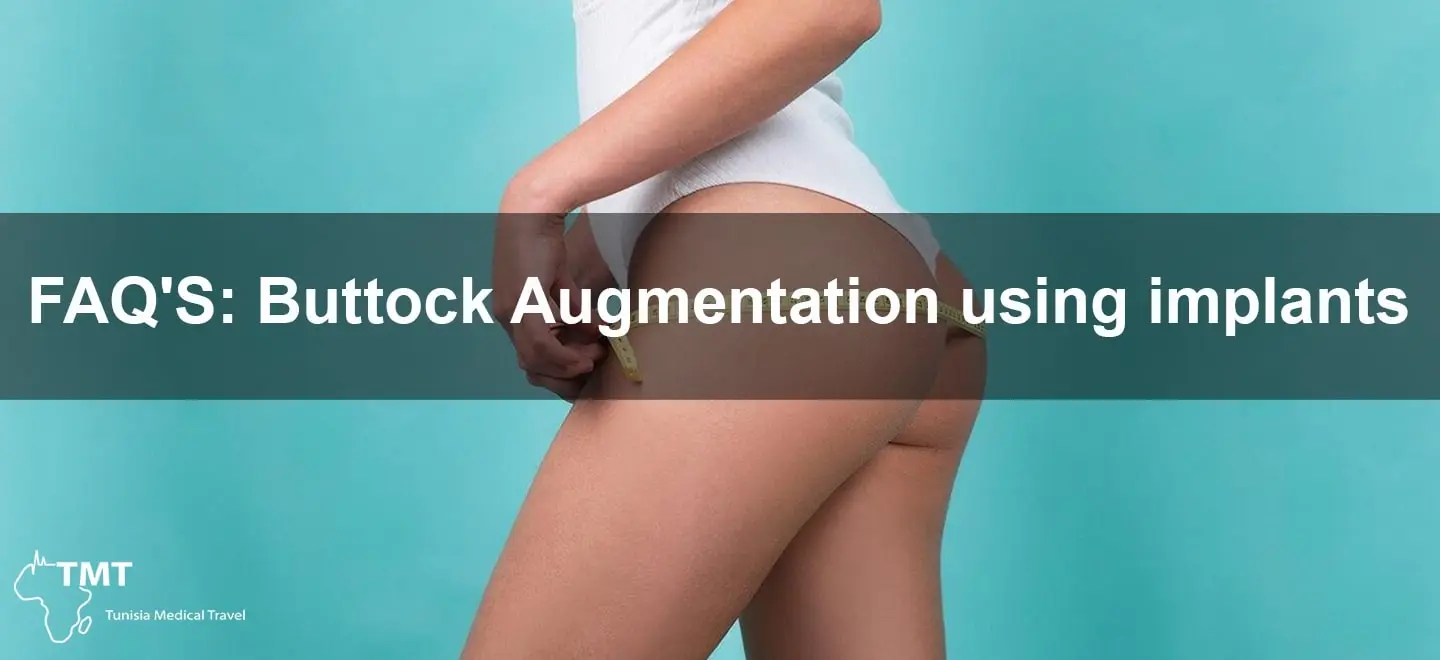FAQ’S: Buttock Augmentation using implants
FAQ’S: Buttock Augmentation using implants
Am I a good candidate for the procedure?
A good candidate is one that understands the limitations and is looking to enhance, not perfect, their appearance. The physical examination helps to identify, exactly, what part or parts of the body can be treated and what outcomes might be. Given the risks associated with the surgery and the subsequent recovery period involved, it is only suitable for a patient who is in good health. General factors indicating that taking this step is not advisable are serious medical conditions; a lack of necessary fat in another part of the body to use for the fat transfer method (if that method is chosen instead of implants); and unrealistic expectations. As a general guide, it is common for patients to fall into the age range 18-55. Younger patients are likely to have more elasticity in the skin and therefore get better results. Also, as the amount of fatty tissue increases with age, so too does the opportunity to harvest a sufficient amount of it for the transfer method. However, it is a question of identifying suitability on an individual basis, taking account of a mixture of these factors and the patient’s overall motivation for wanting to undergo the operation. So, you need to decide what is important to you and understand what buttock augmentation can and cannot do for you. Then ensure it is for the right reasons, after sufficient consideration and against a full awareness of the potential positives and negatives. For example, it is useless to expect that it will help keep the buttocks lifted and perky during significant weight changes. However, as it may indeed do, if you end up having surgery, it then becomes vital to care for your health by ensuring you adopt a balanced diet, take regular exercise and avoid dramatic weight fluctuations. This will help to preserve the results of the operation for as long as possible.
What is involved in the procedure?
For a procedure that involves transferring fat from one part of the body to another or getting buttock implants, your surgeon will first perform liposuction to remove fat from a « donor » area. This will usually be your stomach, hips, or thighs. Many people want to get liposuction in these areas anyway, and the added benefit is that the surgeon can accurately inject the fat into your buttocks to create your desired look. Once the surgeon removes the fat, it is most common for patients who get buttock implants to have the implants inserted in or on top of the gluteal muscle. First, the surgeon will make an incision in the area where your butt cheek meets the back of your thigh. Then, either a pocket will be created between the muscle and tissue or, if the implants are going on top of the muscle, a larger pocket will be made in the muscle itself. After the implants have been inserted and arranged to create the look you and your surgeon have settled on, the surgeon will suture the incisions with removable stitches that will be taken out in a week or two. If you’re getting a butt lift because your skin has started to sag as a result of weight loss or with the effects of aging, your surgeon will work to remove the excess skin and pull the remaining skin taut over your buttocks. This creates a lifted and youthful appearance. The surgeon will make the incisions where your butt cheek meets the back of your thigh and remove any excess pockets of fat and one or more of the layers of muscle and skin beneath the buttocks will be lifted. Once the procedure is over, the incisions will be closed with absorbable sutures and surgical tape. Drains might be placed to help with the healing process. He will also give you a compression garment to reduce swelling and promote healing.
How likely is it for the implant to move around after surgery?
When a surgeon creates a pocket in the tissues of the buttock and places a buttock implant in the pocket, the body grows a very thin layer of scar tissue around the implant. This scar tissue helps to stabilize the implant in a fixed position. However, the implant has the possibility to move around a little bit but not very likely for a couple of reasons. First, the scar tissue provides help to secure the implant in a fixed position once it has been formed. There are actually three layers of tissue that secure the implant in place. The first layer is the pocket that the surgeon creates during the surgery to hold the implant in position, the second layer is the scar tissue, and the third layer is the rest of the muscle underneath the implant. It is this protection of three layers of securing that makes it hard for the implant to shift. Cardio, blood vessels, and nerves are running through or attached to the muscle below the implant, if an implant moves around. These structures may get injured. Patients should avoid doing strenuous activities such as running or jumping for at least the first two months after buttock implant surgery as it will increase the chance of the implant to shift. If the implant has shifted and has caused discomfort or moved into a wrong position, revision surgery may be required to reposition the implant back into place. There, it is very important that patients should follow the postoperative instructions provided by their surgeons and avoid involving in any strenuous activities for the best recovery after buttock implant surgery. Also, it is vital that any complication or discomfort should be reported to their surgeons as soon as possible so that appropriate treatments can be given in a timely manner. After forming a scar capsule around the implant, it is very unlikely for a buttock implant to move around once the scar tissue has been matured. Surgeons must also avoid injuring the scar by minimizing the potential chance of implant movement during the surgery and providing thorough postoperative instructions to patients to ensure a safe recovery period.

Can my buttock implants rupture and leak silicone into my body?
Nowadays, the implants used for buttock augmentation have a thick shell and very rarely rupture. In the event the implants do rupture, the thick type of silicone inside the implants would not flow. Instead, the thick silicone would maintain its shape. This is in contrast to older implants or liquid silicone, which could leak. In the event of a rupture, the implants would have to be removed. The hole which is created can be sewn back together at the time of implant removal. If this is not immediately possible, it can be useful to allow the tissue time to heal before a new implant is inserted. If for any reason the implant cannot be removed immediately, then precautions can be taken to ensure a rupture does not lead to difficulty in removing the implant at a later date. Entering the space that we create during surgery for a buttock implant, infection or contamination could, in rare circumstances, occur. If this is the case, the implant may need to be removed. Again, in a healthy patient, the risk of infection is very low. You should seek immediate medical attention if you experience severe pain in the area of the implants following surgery, as infection can rapidly take hold if not treated. All surgery comes with risk and the need to take precautions to carefully limit the risk as much as possible and the avoidance of complications. The material used for the implant has been carefully studied and reassures against the possibility of any known risk. As the material used in the implant is placed within the body, it is carefully regulated. The risk of any known complications and the decisions made to protect against them are discussed with the patient before surgery.
Do I have to have a dramatic change in my derriere if I undergo this procedure?
There is a tendency that many clients may want a very significant increase in the size of their derriere after undergoing a buttock augmentation procedure. However, surgeons always advise their clients that it is not absolutely necessary to seek for a dramatic change. Minimal changes are possible if that is what the client desires. Moreover, there are physical limitations to the amount of augmentation that one can achieve in each individual case. These limitations will be discussed during consultations with a doctor. Such limitations are also influenced by the type and size of the implants to be used as well as the experience of the surgeon performing the surgery. It is also important to appreciate the fact that not all procedures will guarantee success in achieving the kind of change that one could be looking for. For instance, if a client opts for a fat transfer to the derriere, there is no guarantee that the transferred fat cells will all survive. The survival of the cells will depend on a number of factors including but not limited to the quality of blood supply in the area of transfer, post-operative care and the patients’ adherence to post-operative stabilization recommendations. Due to the numerous uncertainties surrounding the outcome of fat transfer procedures, it is advisable to consider an implant-based procedure since its outcomes are predictable and success rates are higher. However, the choice of the type of procedure to be undertaken will be influenced by a number of factors such as patient desire, available resources, desired outcome, location of the procedure and even the assessment of the degree of augmentation needed to achieve a pleasing silhouette. By having a meaningful discussion with your surgeon, all these factors will be considered and the best course of action taken.

